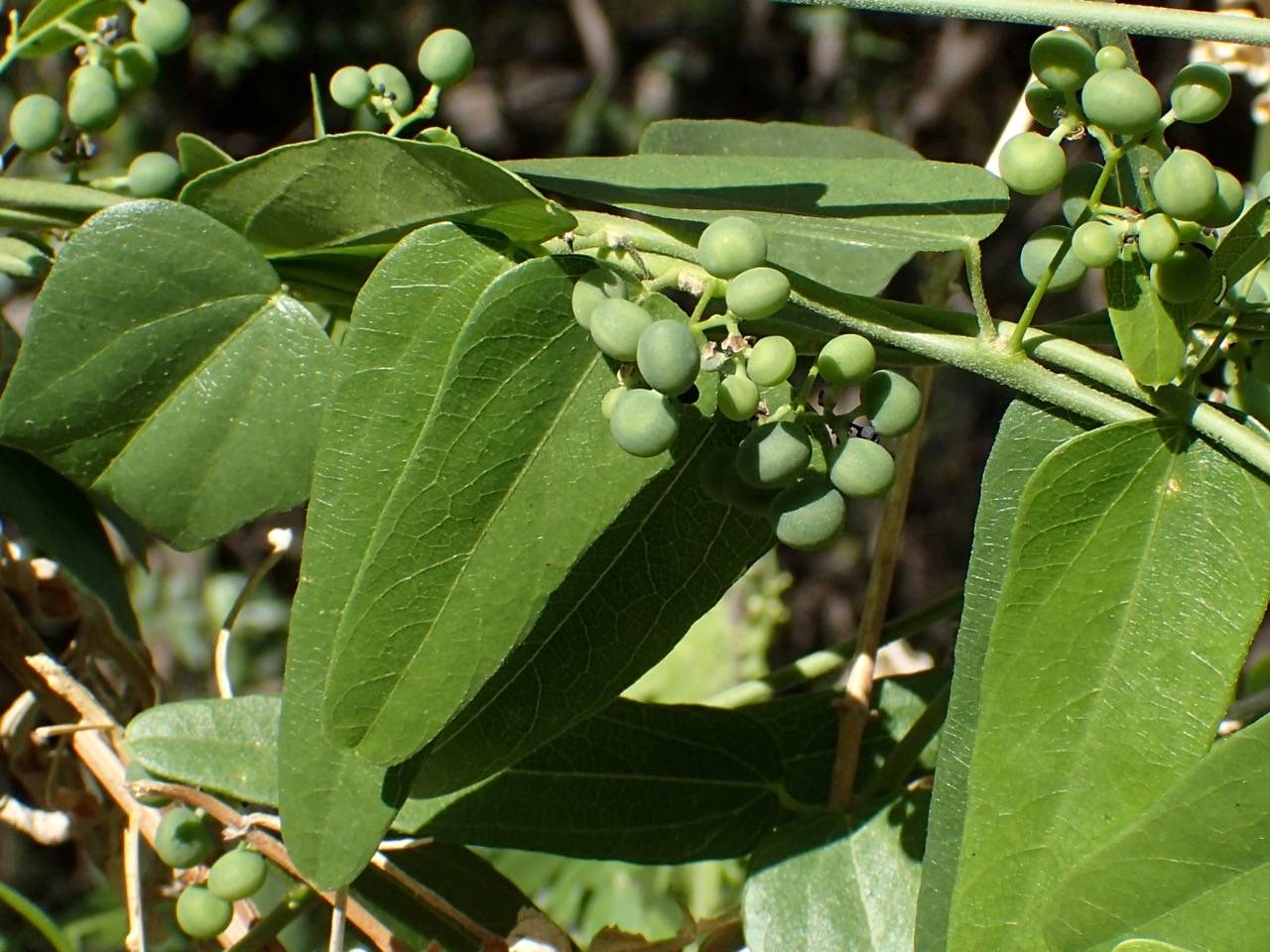
|
Menispermaceae |
|
|
Vines and lianas [shrubs or trees], deciduous, woody at least at base, twining or clambering. Stems striate, without spines. Leaves alternate, simple; stipules absent; petioles present. Leaf blade palmately veined, often palmately lobed. Inflorescences axillary or terminal, fascicles, cymes, racemes, or panicles, flowers pedicillate. Flowers unisexual, staminate and pistillate on different plants, never showy; sepaloid bracteoles absent; perianth hypogynous, segments distinct or fused, not showy, greenish white to white or cream, imbricate or valvate. Staminate flowers: sepals usually 6, not spurred; petals usually 6, sometimes absent, distinct or connate, ± concave, frequently minute; nectaries absent; stamens either opposite petals and equal in number, or numerous; filaments distinct or united; anthers dehiscing longitudinally [or transversely]; pistillodes sometimes present. Pistillate flowers: sepals (4-)6, sometimes reduced to 1; petals often 6 or reduced to 1, ± concave, usually minute; nectaries absent; staminodes frequently present; pistils 1-6; ovules 2, aborting to 1, amphitropous; style often recurved; stigma entire or lobed. Fruits drupes, straight or horseshoe-shaped; exocarp membranous; mesocarp ± pulpy; endocarp (stone) bony, often warty, ribbed. Seeds never stalked; endosperm present or absent; embryo usually curved. PLANT: Woody vines or more rarely shrubs, trees or perennial herbs, usually dioecious. LEAVES: alternate, simple or rarely trifoliolate, entire or occasionally 3-5-lobed, petiolate, palmate, or occasionally peltate, usually estipulate, palmately or sometimes pinnately veined. INFLORESCENCE: racemose to paniculate or umbellate, rarely solitary, commonly bracteate. FLOWERS: actinomorphic; sepals (1-)6(-12), often in 2-3 series, distinct or rarely united, imbricate or valvate; petals (0-)6, distinct or rarely united, often in 2-3 series, yellow, white, or green; stamens (1-)6-12(-40), opposite the petals, distinct or the filaments united; pistillate flowers often with staminodia, hypogynous, with (1-)3-6(-32) separate carpels; stigma sessile or on a very short style. FRUIT: a l-seeded drupe or sometimes a nut; endocarp bony,· usually curved and sculptured, often laterally compressed. SEED: with curved, coiled, or rarely straight embryo. NOTES: 70-80 genera, 400 spp., mostly tropical. REFERENCES: Laferriere, Joseph E. 1994. Menispermaceae. J. Ariz. - Nev. Acad. Sci. Volume 27, 237. |
|
This project was made possible in part by the Institute of Museum and Library Services [MG-70-19-0057-19].
Powered by Symbiota


